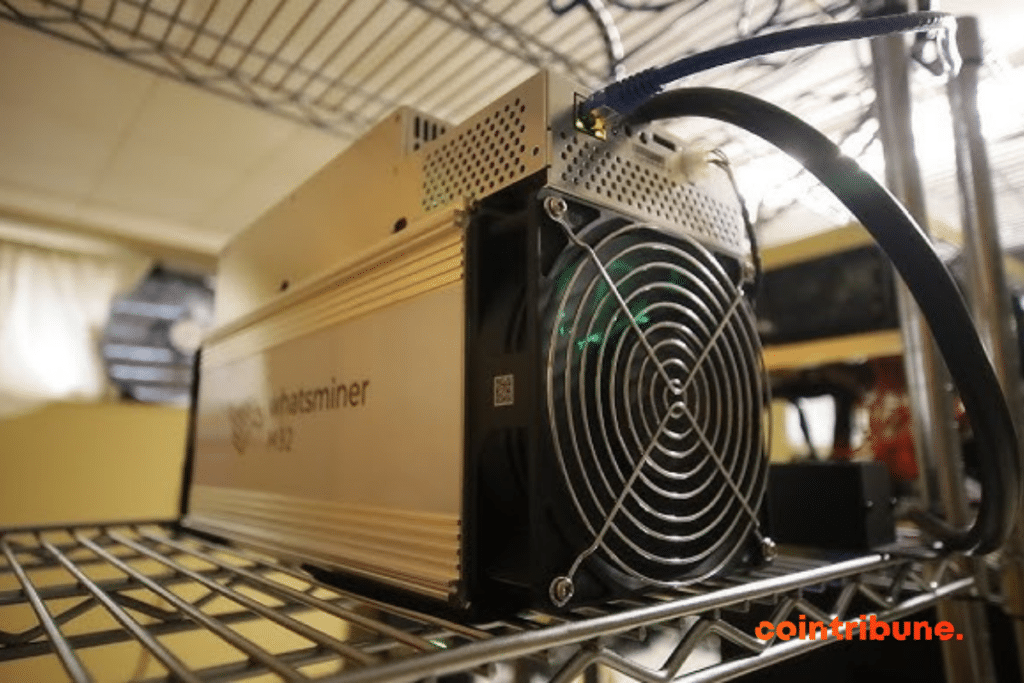At current Hashprice, the S21’s making $23 a day in #btc
— Hashrate Index 🟧⛏️ (@hashrateindex) December 22, 2023
🎥 S21 Review: https://t.co/Ay92RzyWSppic.twitter.com/bJxNIB7T2G
A
A
Bitcoin Mining - End of Year Quiz
Tue 26 Dec 2023 ▪
5
min read ▪ by
Learn
▪
Mining
Here is a small quiz by TheMinerMag to keep bitcoin miners busy during the quiet holiday season.

How to calculate the hashprice ?
Measured in $/PH/s, hashprice represents the daily US dollar earnings from producing one PH/s.
Hashprice = (Amount of bitcoins mined each day + transaction fees) x (Price of a bitcoin in dollars) / (Total Hashrate in PH/s)
Which gives us dollars divided by PH/s ($/PH/s).
Its counterpart is the hashcost which indicates the dollar amount it costs to produce one PH/s. It is expressed in relation to the efficiency of a company’s ASIC fleet and the cost of electricity.
Hashcost = (Average efficiency of mining fleet in J/TH) x (electricity cost in $/MWh) x (24 hours)
This also gives us dollars divided by PH/s ($/PH/s) by dimensional analysis.
In sum, hashcost must be lower than hashprice to be profitable.
The Hashrate ?
Hashrate = (2³² hash) x (mining difficulty) / (Block interval in seconds)
Mining difficulty is a number derived from the probability of finding a valid hash. It is adjusted every 2016 blocks (approximately every 2 weeks) to maintain an average interval of 10 minutes between blocks.
Dimensional analysis of hashrate shows us hashes divided by seconds. Hence the expression of hashrate in EH/s, or PH/s, etc.
EH = 1 Exahash = 1 000 000 000 000 000 000 H
PH = 1 Petahash = 1 000 000 000 000 000 H
TH = 1 Terahash = 1 000 000 000 000
GH = 1 Gigahash = 1 000 000 000 H
MH = 1 Megahash = 1 000 000 H
1 EH/s = 1 000 PH/s = 1 000 000 TH/s = 10¹⁸ H/s
A state-of-the-art ASIC like the Bitmain S21 boasts 200 TH/s. Therefore, it takes 5,000 S21 miners to produce one EH/s. And thus, 2.5 million miners to produce the 500 EH/s that the Bitcoin network has just reached.
We cannot know exactly how many hashes are generated at any given moment. Hashrate is calculated retrospectively based on how quickly blocks have been found.
The Efficiency of an ASIC ?
ASIC stands for application-specific integrated circuit. It is a chip designed to do one thing only. In the case of miners, it is to hash a block header using the SHA-256 algorithm, resulting in a hash.
The miner’s goal is to try different headers (by varying the nonce) until finding a hash smaller than a target number, meaning a hash that starts with a certain number of zeros. The more zeroes, the harder the hash is to generate.
The efficiency of an ASIC represents the amount of energy (in joules) needed to produce one terahash.
Efficiency = Watt/TH/s = (Watts x seconds) / TH = J/TH
The lower the efficiency figure, the better.
Examples of ASIC efficiencies by year of launch:
2023 / S21 : 17.5 J/TH
2021 / S19 XP : 21.5 J/TH
2020 / S19 : 29.5 J/TH
2019 / S17 : 39.5 J/TH
2018 / S15 : 59 J/TH
2017 / R4 : 97 J/TH
Efficiency and hashrate of a miner allow us to know its power capacity. This metric is measured in megawatts and is often used to discuss the significance of an installation.
Power capacity = (Installed Hashrate in EH/s) x (Average efficiency of mining fleet in J/TH)
If a miner has 4 EH/s installed and the average efficiency of his fleet is 25 J/TH, then the power is 100 MW.
Large mining installations can reach up to 1000 megawatts (1 Gigawatts), such as Riot’s in Corsicana, Texas. Such complexes are rare. They usually do not exceed 300 MW.
The “Realized Hashrate” ?
This metric evaluates a miner’s performance, often over a month. If a company mines X bitcoins during the month, its performance will be calculated this way:
Realized hashrate = (X bitcoins) x (the global hashrate for the month studied) / (bitcoin reward per block)
This allows for further calculation of the hashrate conversion rate, measured in %. That is, the proportion of one’s miners that effectively earned bitcoins.
Conversion rate = Realized hashrate / Installed Hashrate
A rate above 100% indicates that the miner is performing above average, and vice versa.
Here is the thread from TheMinerMag on which this article is based :
Maximize your Cointribune experience with our "Read to Earn" program! For every article you read, earn points and access exclusive rewards. Sign up now and start earning benefits.
A
A
Bitcoin, geopolitical, economic and energy journalist.
DISCLAIMER
The views, thoughts, and opinions expressed in this article belong solely to the author, and should not be taken as investment advice. Do your own research before taking any investment decisions.